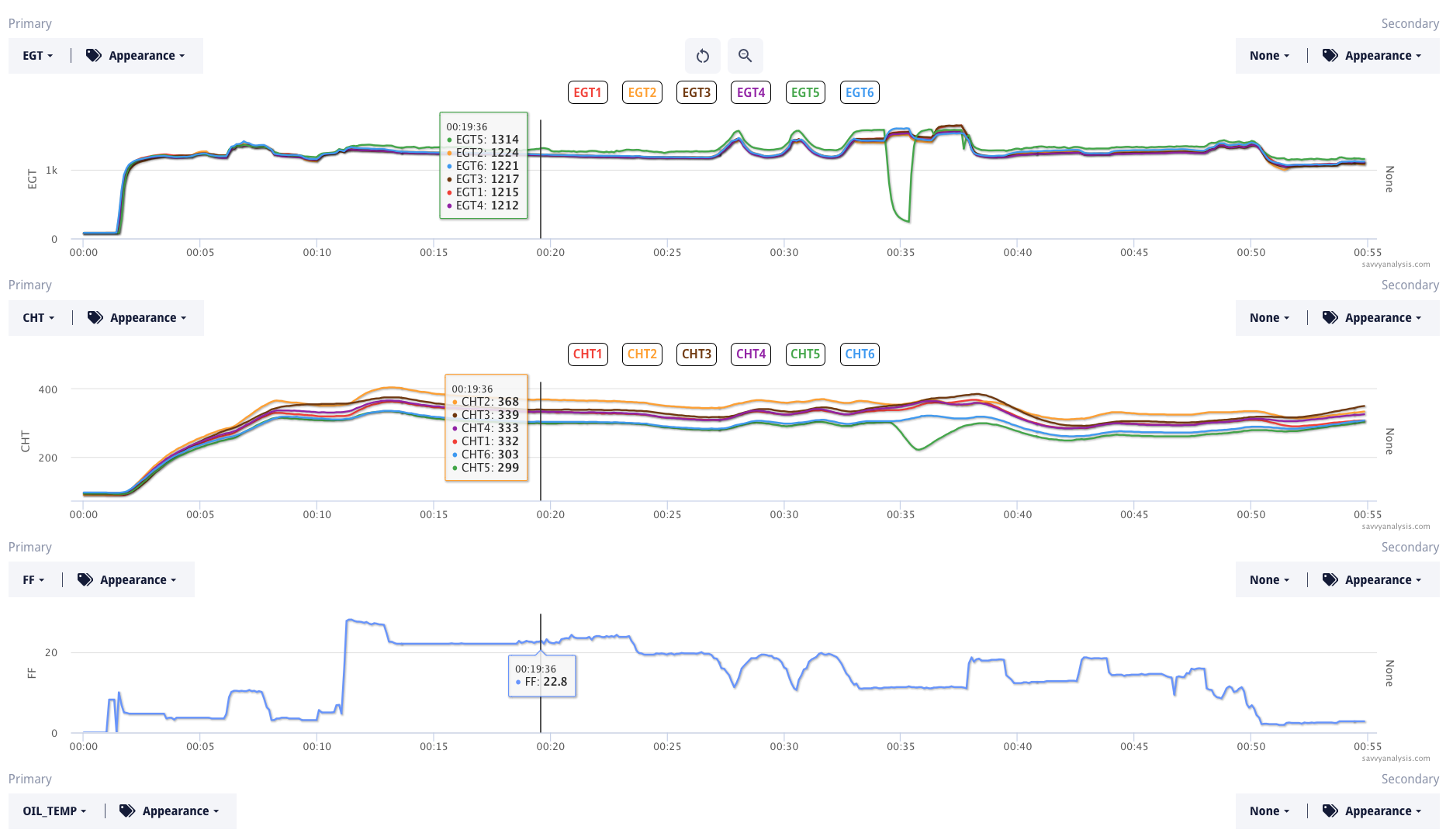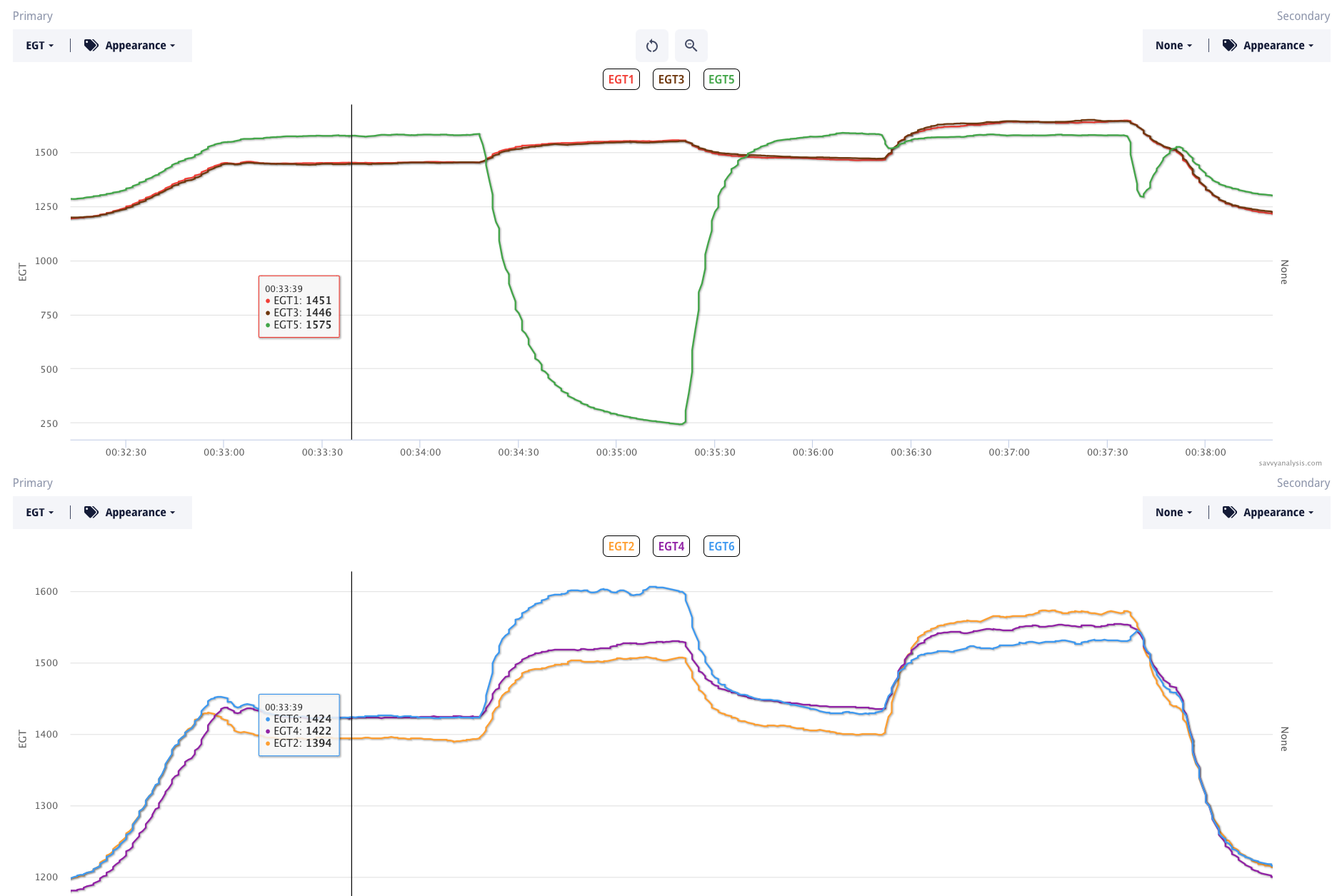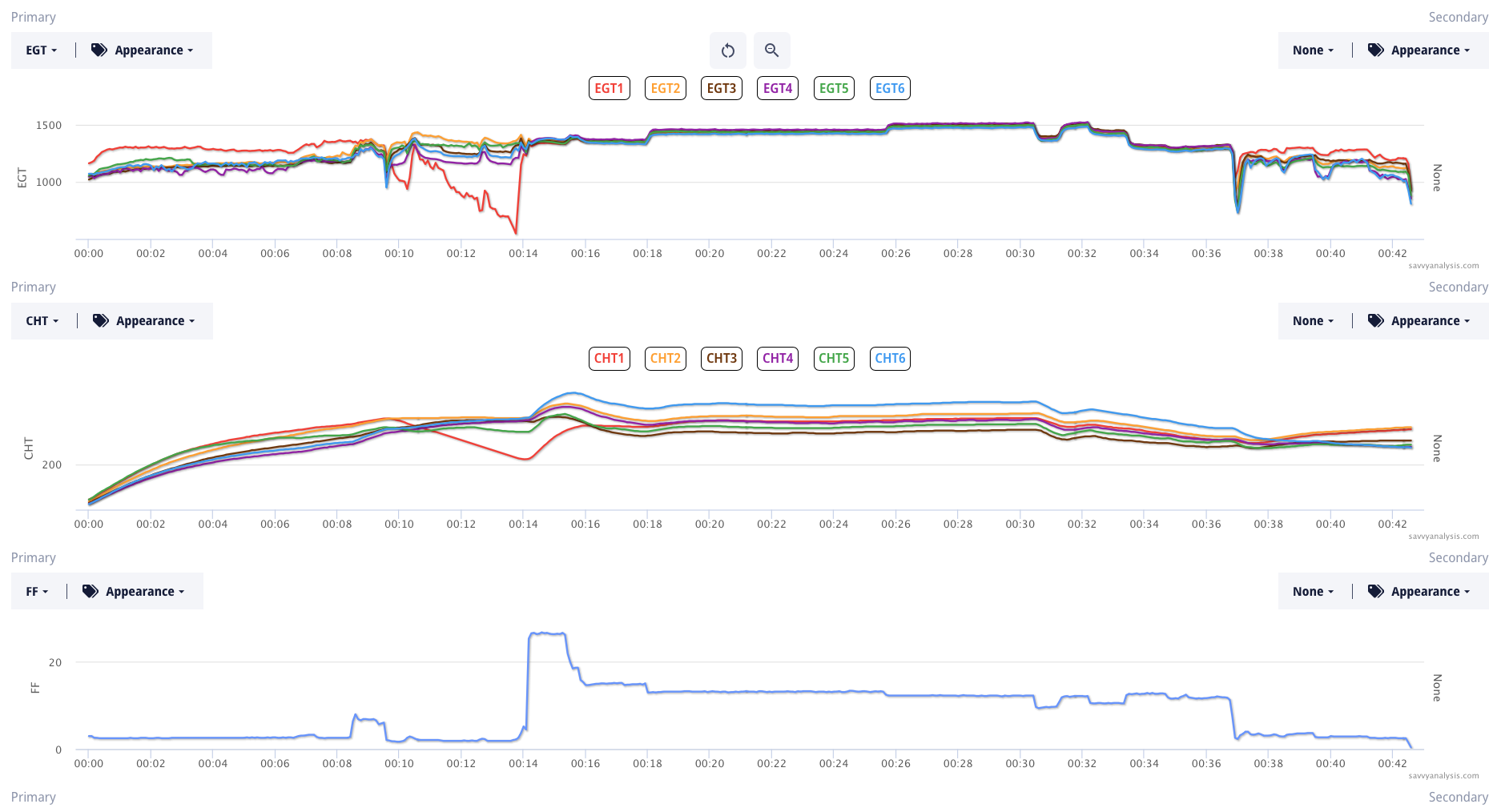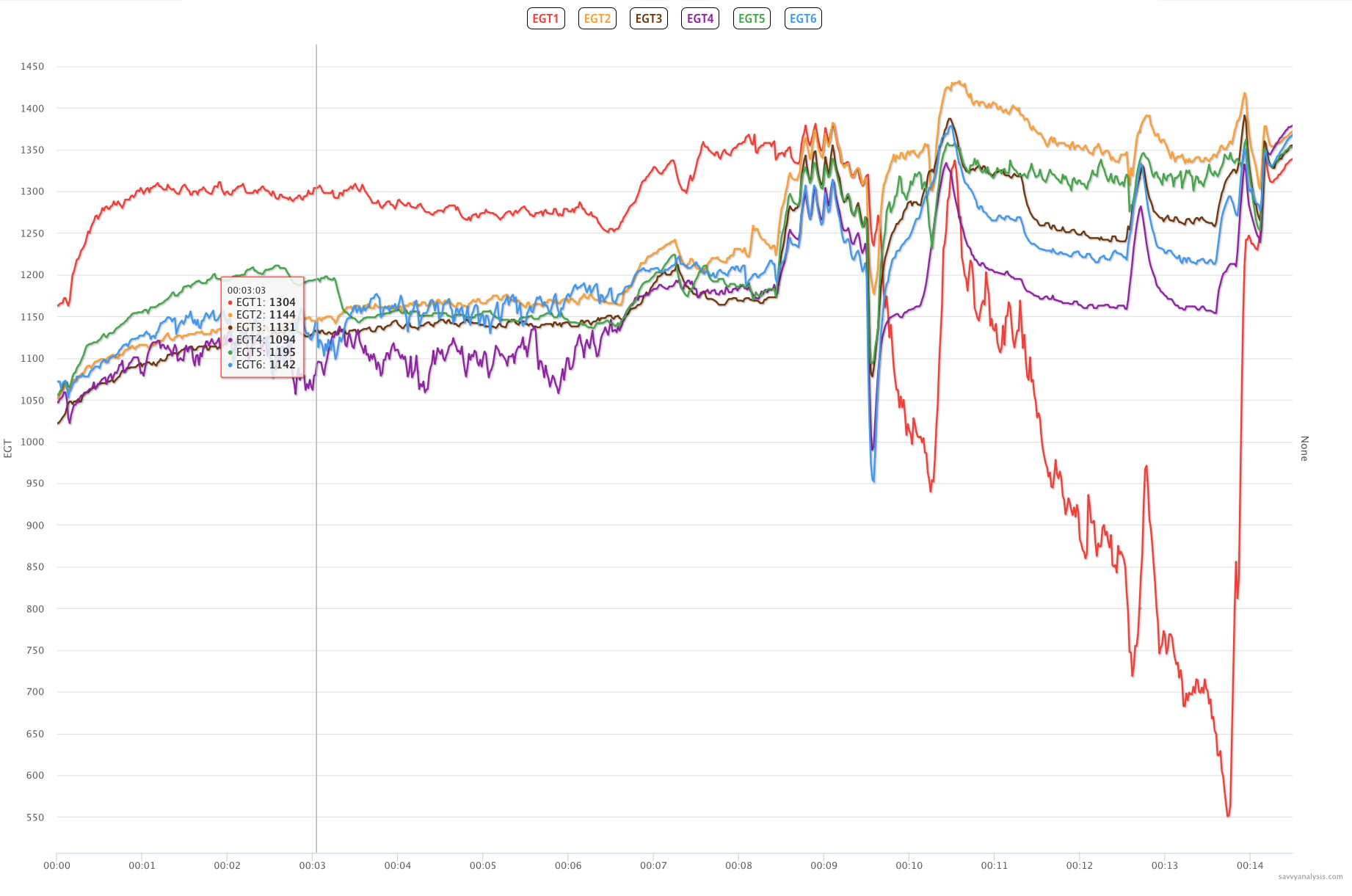When we started Savvy Analysis Pro ten years ago, we wondered how long it would take before deep learning and artificial intelligence would take over and push the human analysts to the curb. In those ten years, we’ve rolled out Report Cards, Trend Analysis, reports, and three iterations of FEVA reports. Ten years ago we wondered how the computer would be able to identify and ignore bogus data. We’re closer to that now, as Mike Busch explains in his November article for AOPA Pilot. As 2023 dawns, watching Chat GPT explaining quantum physics and writing Haiku poetry, we’re probably a little closer to the curb than ten years ago.
The Puzzler was born to examine unusual engine data. It was an homage to – ok, we stole the idea from – Click and Clack on NPR. They asked a question on one episode, then gave you the answer a week later. That format wasn’t going to work. Our format was to display some data, float some possibilities, then explain why one answer was correct, or at least more likely. We didn’t give you a week, you got the answer right away. But you could take as much time reviewing the data as you like before moving to the discussion and the answers. A week, even.
And the Puzzler took on a mission, which I like to restate when January rolls around. The goal is to help pilots recognize data anomalies in real time to make good decisions about the safety of the flight, and help owners to make informed maintenance decisions. So let’s get started.
We begin 2023 with data from a Mooney M20C powered by a Lycoming IO-360 engine and data from a Garmin 275 with a 1 second sample rate. Display is EGTs, CHTs and FF.

Here’s a quick overview. The trouble seems to be with EGT and CHT for cylinder 2. The others seem fine. EGT 2 and CHT 2 are high at max. FF, then both drop when FF is reduced. Drop is an understatement. Maybe plunge is a better word. One of the textbook symptoms of a clogged injector is high EGT and CHT at max FF, then both moving lower when FF is reduced. So we’re seeing that, but the drop is extreme. It’s like FF is being cut off anytime it gets below about 8.7 GPH. But, when FF is just below 10 GPH – there’s a faint grey horizontal line – EGT is sort of normal, but CHT is still low.
It’s rare to see this kind of almost binary scenario, with EGT ok above a certain FF rate, then clearly not ok below it. Typically the traces are more linear. We recommended cleaning injector 2, and the first cleaning improved things, but we still saw the textbook pattern. A second, more thorough, cleaning fixed it.
Next is data from a Piper Saratoga powered by a Lycoming IO-540 engine and data from an EI CGR 30P with a 1 second sample rate. EGTs. CHTs and FF. Nothing special about cursor placement – just getting it out of the way.

This time the problem seems to be with cylinder five. EGT 5 is high starting at takeoff through the mixture sweeps, plunges during the first mag checked, then looks ok during the second mag checked. Then it’s high again until shutdown. Meanwhile, CHT 5 is low throughout, and corroborates the EGT plunge during the mag check. Let’s zoom in to the mag check, and click the M to set up the mag check display with EGTs 1-3-5 on top and 2-4-6 below. Again nothing special about cursor placement.

The high EGT for number 5 up to this point in the flight suggests weak spark from one of the plugs. Most of the time when we isolate a weak plug as we do here at the 34:30 mark, the EGT trace will rise and become erratic. On this one, it looks like the plug isn’t firing at all. It’s just shy of a minute that the top plug of 5 is isolated, and it’s an interesting shark tooth pattern that the EGT 5 trace makes on its way down. There’s hot gas in the pipe – from the good plug – and suddenly it stops being hot, and takes almost that full minute to dissipate before the good plug gets activated again. In his October 2010 article for EAA Sport Aviation Mike explains why EGT isn’t a “real” number.
Now that we’re zoomed in we can also see a problem with the bottom plug of cyl 6. Is this because the opposing cylinder has stopped making power – or is this a separate stand-alone problem with that plug? Since the cowl’s coming off anyway for cyl 5, it makes sense to check the bottom plug of 6.
Next is data from a Beech Bonanza 36 powered by a Continental IO–520 engine and data from a JPI 830 with a 2 sec sample rate. EGTs, CHTs and FF.

From 14 to 36 minutes the data looks great. EGTs are about as stable and uniform as they can get. CHT 6 is a little high – and because EGT 6 isn’t, that suggests a cooling issue with cyl 6. But the first 14 minutes and the last 7 minutes are anything but stable and uniform. And the client reported rough running, which was not a surprise. Let’s zoom into the first 14 minutes with EGT alone.

By my count, EGT 3 is the only one that isn’t struggling. 2 is ok initially, but not so good after the runup and just before takeoff. 1 and 4 are the worst, with 1 throwing a tantrum right before takeoff power is applied. Click and Clack taught us that just because the answer seems like the simplest one, it isn’t necessarily wrong. What do all these cylinders have in common? Induction – not really because there are independent tubes on each side. Spark – yeah maybe a bad mag could cause this trouble, but why do we see such a serene output after takeoff and until ground ops again. Gas – let’s explore that. What setting do all cylinders share during ground ops but not in flight?
Idle mixture. This airplane had just come out of annual, so we asked if idle mixture had been adjusted. Sure enough, it had. So we recommended having the shop take another look.